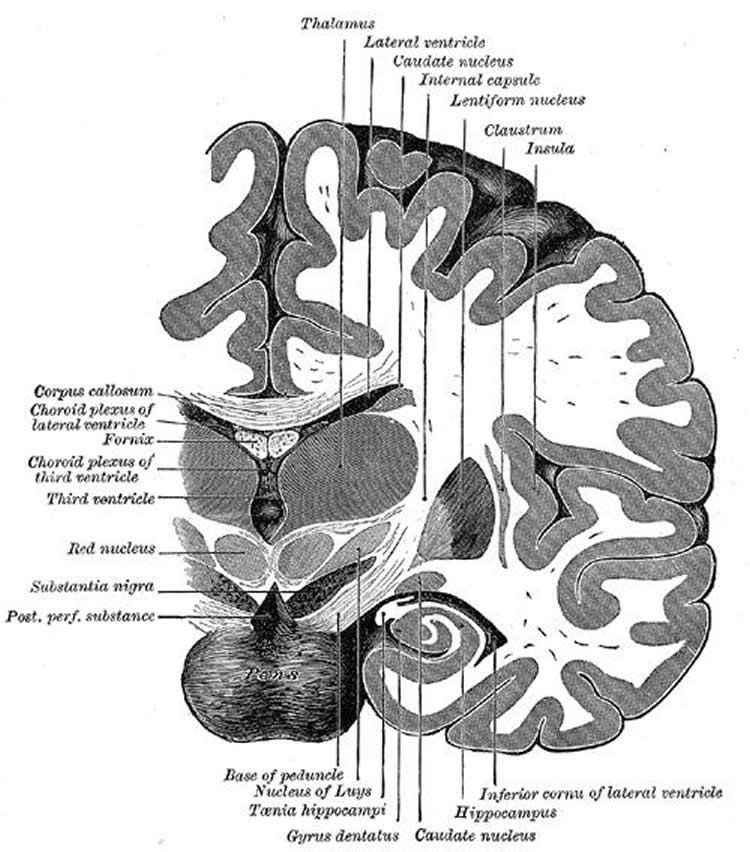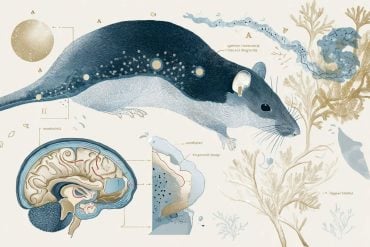Summary: Researchers have identified neurons in the dentate gyrus that help to reprogram lasting traumatic memories.
Source: EPFL.
Memories of traumatic experiences can lead to mental health issues such as post-traumatic stress disorder (PTSD), which can destroy a person’s life. It is currently estimated that almost a third of all people will suffer from fear- or stress-related disorders at one point in their lives.
Now, a new study shows – at the cellular level – how therapy can treat even long-term memories of trauma. “Our findings shed, for the first time, light onto the processes that underlie the successful treatment of traumatic memories,” says EPFL Professor Johannes Gräff of EPFL’s School of Life Sciences, whose lab carried out the study.
In the field of treating traumatic memories there has been a long-debated question of whether fear attenuation involves the suppression of the original memory trace of fear by a new memory trace of safety or the rewriting of the original fear trace towards safety. Part of the debate has to do with the fact that we still don’t understand exactly how neurons store memories in general. Although they don’t exclude suppression, the findings from this study show for the first time the importance of rewriting in treating traumatic memories.
Research in this area focuses on understanding the brain’s capacity to reduce traumatic memories, but surprisingly few studies have investigated treatment options for attenuating long-lasting trauma (aka “remote fear”) in animal models.
The EPFL scientists found that remote fear attenuation in the brain is connected to the activity of the same group of neurons that are also involved in storing these memories. Working with mice, the scientists have located these neurons in the brain’s dentate gyrus, an area of the hippocampus that is involved in the encoding, recall, and the reduction of fear.
The mice used in the study are genetically modified to carry a “reporter” gene that produces an identifiable and measurable signal, e.g. a fluorescent protein, following neuronal activity. Using a fear-training exercise that produces long-lasting traumatic memories, the scientists first identified the subpopulation of neurons in the dentate gyrus that are involved in storing long-term traumatic memories.

The mice then underwent fear-reducing training, which resembles exposure-based therapy in humans – the most efficient form of trauma therapy in humans today. Surprisingly, when the researchers looked again into the brain of the mice, some of the neurons active at recalling the traumatic memories were still active when the animals no longer showed fear. Importantly, the less the mice were scared, the more cells became reactivated. This was a first hint that the same population of neurons may be involved in storing and attenuating traumatic memories.
The researchers then reduced the excitability of the recall neurons during the exposure therapy and found that the mice showed poorer fear reduction compared to controls. But when they reduced the excitability of other neurons in the dentate gyrus, there was no such effect, showing that the recall neurons in the dentate gyrus are crucial for fear attenuation.
Finally, when the researchers enhanced the excitability of these recall neurons during the therapeutic intervention, they found that the mice showed improved fear reduction. Thus, they concluded that attenuating remote fear memories depends on the continued activity of the neurons they identified in the dentate gyrus.
Funding: Swiss National Science Foundation, NCCR Synapsy, European Research Council (ERC), and MQ – Transforming Mental Health funded this study.
Source: EPFL
Publisher: Organized by NeuroscienceNews.com.
Image Source: NeuroscienceNews.com image is credited to Henry Gray, Anatomy of the Human Body (1918).
Video Source: Video credited to EPFL.
Original Research: Abstract for “Reactivation of recall-induced neurons contributes to remote fear memory attenuation” by Ossama Khalaf, Siegfried Resch, Lucie Dixsaut, Victoire Gorden, Liliane Glauser, and Johannes Gräff in Science. Published June 15 2018
doi:10.1126/science.aas9875
[cbtabs][cbtab title=”MLA”]EPFL “Neurons that Rewire Traumatic Memories.” NeuroscienceNews. NeuroscienceNews, 16 June 2018.
<https://neurosciencenews.com/traumatic-memory-neurons-9359/>.[/cbtab][cbtab title=”APA”]EPFL (2018, June 16). Neurons that Rewire Traumatic Memories. NeuroscienceNews. Retrieved June 16, 2018 from https://neurosciencenews.com/traumatic-memory-neurons-9359/[/cbtab][cbtab title=”Chicago”]EPFL “Neurons that Rewire Traumatic Memories.” https://neurosciencenews.com/traumatic-memory-neurons-9359/ (accessed June 16, 2018).[/cbtab][/cbtabs]
Abstract
Reactivation of recall-induced neurons contributes to remote fear memory attenuation
Whether fear attenuation is mediated by inhibition of the original memory trace of fear with a new memory trace of safety or by updating of the original fear trace toward safety has been a long-standing question in neuroscience and psychology alike. In particular, which of the two scenarios underlies the attenuation of remote (month-old) fear memories is completely unknown, despite the impetus to better understand this process against the backdrop of enduring traumata. We found—chemogenetically and in an engram-specific manner—that effective remote fear attenuation is accompanied by the reactivation of memory recall–induced neurons in the dentate gyrus and that the continued activity of these neurons is critical for fear reduction. This suggests that the original memory trace of fear actively contributes to remote fear attenuation.






